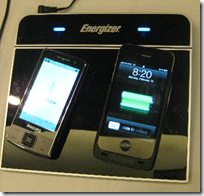RunRev has announced a preview version of its LiveCode for Google Android, which will join existing versions for Windows, Mac, Linux, Web and iOS.
LiveCode is like a modern-day HyperCard, an early database and simple application builder for the Mac. It includes a graphical development environment with scripting using the LiveCode language, described by RunRev as “A very high level language”. Here is a sample:
put “The fox jumped over the lazy dog.” into theText
put “ quick brown” after word 2 of theText
The advantage is fast development, once you have become familiar with the platform.
On a quick look I noticed that LiveCode looks great for building a business-oriented client, but looks more challenging when it comes to interacting with a remote server application, though it does have support for basic http and https requests as well as socket support.
Now that Android is supported LiveCode looks interesting as a quick and easy route to cross-platform mobile apps.
Mobile app developers can register to receive the Android pre-release version today at www.runrev.com.














